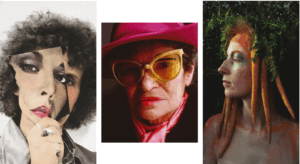
Prof Saracino receives fellowship from prestigious Huntington Library
By: Michael Chesnick. March 7, 2023.Jennifer Saracino, an assistant professor of Art History at the University of Arizona School of Art, has received a Barbara Thom postdoctoral fellowship from the prestigious Huntington Library near Los Angeles for the 2023-24 school year.
The fellowship will allow Saracino to revise her dissertation on the Uppsala Map of Mexico-Tenochtitlan into her first book manuscript. Uppsala is the earliest known map of Mexico City, painted by indigenous Nahua artists after the Spanish Conquest (c. 1540).

“I’m so honored that they’ve recognized the significance of my project,” Saracino said. “The Huntington Library has always been an institution of which I’m dreamed of becoming a fellow. The strengths of their collections include the Hispanic Americas, Maps & Manuscripts and the history of science. These are all avid research interests of mine, so it is an ideal setting in which to carry out my research and manuscript revision.
“Not to mention, it’s absolutely stunning,” she said. “I’m really drawn to the fact that it has a research library, art museum and botanical gardens. It’s the perfect fit for an interdisciplinary art historian like myself.”
Saracino grew up in Western Pennsylvania but received her B.A. in Art History from the University of Southern California, not that far from the Huntington Library.
“I’m very excited to go back to my old stomping grounds and spend some time by the coast,” Saracino said. “Much of my Filipino family also lives in Los Angeles, so I’m excited to be able to spend more time with them.”
The Huntington complex, in San Marino, Caliornia, is one of the world’s top independent research libraries, with over 11 million items from the 11th to the 21st centuries. The Thom fellowships, lasting nine to 12 months, include a $50,000 stipend and are intended to support non-tenured faculty who are revising their dissertation for publication as their first monograph.
In the past, Saracino said art historical scholarship regarded the Uppsala Map of Mexico-Tenochtitlan as having a pronounced European influence compared to other Indigenous-made manuscripts of the same time period.
“I felt that a deeper analysis of the map was missing because of this,” she said. “These artists were extraordinary cultural brokers between the local European and Indigenous populations. They were fluent not only in multiple spoken and written languages but also visual languages.

“As the daughter of an immigrant and someone with my own multicultural identity, I felt that these artists were owed more recognition in the scholarship as the extraordinary individuals that they were,” Saracino said. “I wanted to explore what it meant to hold multiple identities and how that is reflected in their representation of the dynamically changing world in which they were living.”
Last fall, Saracino presented a paper, “The Ayer Map of Teotihuacan as Embodied Action & Performance,” after being invited to the 21st Kenneth Nebenzahl, Jr. Lectures in the History of Cartography at the Newberry Library in Chicago.
She also enjoyed participating in an interdisciplinary exhibition that saw University of Arizona professors across departments imagine how a Charles Dickens tale, “David Copperfield,” might find a homeland in the Sonoran Borderlands. From digital installation to performance, sonic experiments to film, cartography to micro-publication, the exhibition explored questions about the relationship between arts and public-engagement, literature and everyday places, and authors and readers.
“Art History is important because it allows us all to learn about different people, cultures, values and worldviews through the things they made,” Saracino said.
After earning her undergrad degree from USC, she received her master’s and Ph.D. in Art History from Tulane University in New Orleans. She was a junior fellow in Pre-Columbian Studies at Harvard’s Dumbarton Oaks Research Library & Collection in Washington, D.C., then taught at Flagler College in St. Augustine, Florida, before coming to the University of Arizona in August 2021.
Saracino co-organized a panel, “Ecocritical Art Histories of Indigenous Latin America” on Feb. 18 at the College Art Association (CAA) conference in New York City.
“Art History has broadened my worldview and afforded me the opportunity and privilege to travel the world and meet so many different people,” she said. “I think that to learn about others and their artistic and cultural traditions instills in you a greater empathy and appreciation for difference and diversity.”







